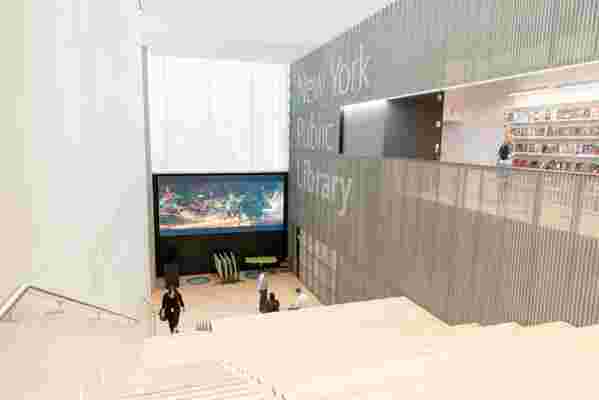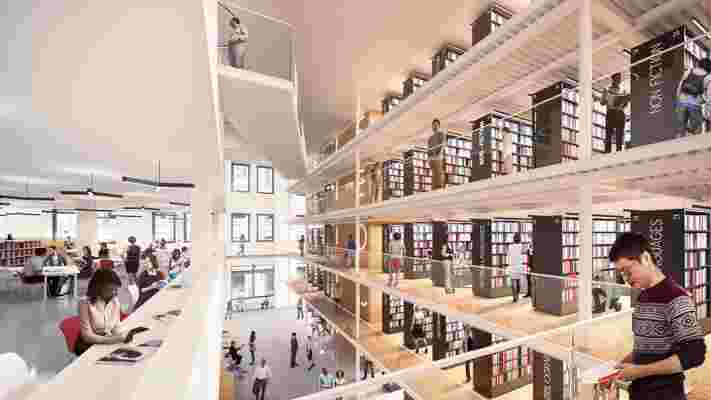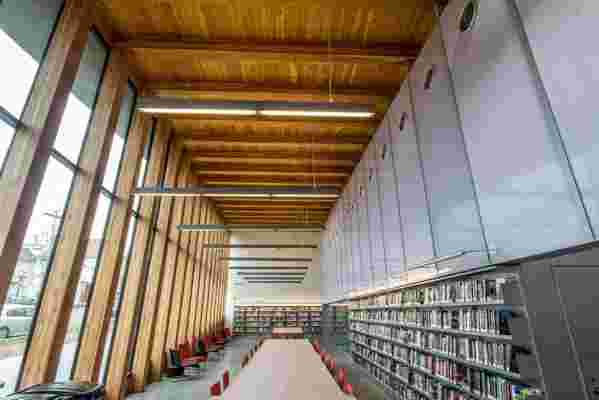This Is the Future of Libraries in the Digital Age
When downtown Seattle’s new public library opened in 2004, it was heralded as a model for the new millennium, fully embracing both the digital era and the spirit of civic ennoblement. And while books—shelved in a four-floor spiral connected by gently sloping ramps—were given pride of place in the design, by OMA ’s Rem Koolhaas and Joshua Prince-Ramus, many assumed that physical tomes would soon go the way of the card catalog and the cassette tape.
More than a decade later, however, demand for the printed word—and its place in libraries—remain strong.
“The idea that everyone will read everything on screens has not proven to be true,” said Meredith TenHoor, an architectural historian and associate professor at Pratt Institute School of Architecture. “There is a place for old-fashioned paper books. The publishing industry knows this, and it is reflected in high-quality library design, too.”

The most innovative library designs, she added, are those that “don’t just conceive of books as sources of information but of the social and intellectual practices that develop around reading and research.”
Risa Honig, vice president of capital planning at The New York Public Library (NYPL), said that it is actually making “books more of an architectural presences in our branches.” (At the moment, about 20 percent of the NYPL’s overall circulation is e-books.)
She added that at the recently opened 53rd Street and soon-to-be-renovated Mid-Manhattan libraries, “books create the look and feel for the spaces. So they're not only part of the design, they are a key part.”
What has shifted is that libraries are increasingly tasked with accommodating a multitude of uses, of which book storage and circulation is just one.

A redesign of the Mid-Manhattan branch by Dutch firm Mecanoo and Beyer Blinder Belle , for example, will add seating, services, and public space to the city’s largest circulating library. Construction is scheduled to begin in the fall.
TenHoor praised Mecanoo’s design: “There is room for research, and for the various kinds of work that are undertaken in a library today, but also preservation of many of the older library typologies that people love,” she said.
When redesigning libraries, the NYPL seeks a mix of informal and formal seating, flexible spaces, more outlets and internet capacity, and natural light, according to Honig—features that can be seen at the recently revamped Washington Heights branch and the Stapleton branch in Staten Island.

“It's critical and vital to our communities that we create inspiring spaces where they can interact with each other and with our materials,” Honig said.
To that end, when designing for the future, perhaps the most important feature of all is not an architectural element, but the site itself. In recent years, both the NYPL and the Brooklyn Public Library have addressed funding shortages by selling off branches in pricey neighborhoods and replacing them with smaller, partially subterranean libraries in the base of the towers that take their place. The new 53rd Street library, for example, which New York architecture critic Justin Davidson referred to as “a sleek but shrunken pit” may have many clever elements, but lacks the light and space of its predecessor.
Several years after the 53rd Street branch deal, the NYPL was considering another such sale, of the Mid-Manhattan branch, which would have helped to fund the renovation of the main Fifth Avenue branch. But in the face of strong public opposition, the NYPL opted to renovate instead. Among the spaces that will be open to the public for the first time is one that should have no trouble weathering future technological shifts: a rooftop terrace—the only free one of its kind in Midtown.